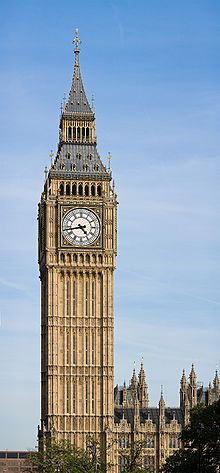Cross posted from The Stars Hollow Gazette
This is your morning Open Thread. Pour your favorite beverage and review the past and comment on the future.
Find the past “On This Day in History” here.
Click on image to enlarge
June 1 is the 152nd day of the year (153rd in leap years) in the Gregorian calendar. There are 213 days remaining until the end of the year.
On this day in 1980, CNN (Cable News Network), the world’s first 24-hour television news network, makes its debut. The network signed on at 6 p.m. EST from its headquarters in Atlanta, Georgia, with a lead story about the attempted assassination of civil rights leader Vernon Jordan. CNN went on to change the notion that news could only be reported at fixed times throughout the day. At the time of CNN’s launch, TV news was dominated by three major networks–ABC, CBS and NBC–and their nightly 30-minute broadcasts. Initially available in less than two million U.S. homes, today CNN is seen in more than 89 million American households and over 160 million homes internationally.
CNN was the brainchild of Robert “Ted” Turner, a colorful, outspoken businessman dubbed the “Mouth of the South.” Turner was born on November 19, 1938, in Cincinnati, Ohio, and as a child moved with his family to Georgia, where his father ran a successful billboard advertising company. After his father committed suicide in 1963, Turner took over the business and expanded it. In 1970, he bought a failing Atlanta TV station that broadcast old movies and network reruns and within a few years Turner had transformed it into a “superstation,” a concept he pioneered, in which the station was beamed by satellite into homes across the country. Turner later bought the Atlanta Braves baseball team and the Atlanta Hawks basketball team and aired their games on his network, TBS (Turner Broadcasting System). In 1977, Turner gained international fame when he sailed his yacht to victory in the prestigious America’s Cup race.
The Cable News Network was launched at 5:00 p.m. EST on Sunday June 1, 1980. After an introduction by Ted Turner, the husband and wife team of David Walker and Lois Hart anchored the first newscast. Burt Reinhardt, the then executive vice president of CNN, hired most of CNN’s first 200 employees, including the network’s first news anchor, Bernard Shaw.
Since its debut, CNN has expanded its reach to a number of cable and satellite television companies, several web sites, specialized closed-circuit channels (such as CNN Airport Network), and a radio network. The company has 36 bureaus (10 domestic, 26 international), more than 900 affiliated local stations, and several regional and foreign-language networks around the world. The channel’s success made a bona-fide mogul of founder Ted Turner and set the stage for the Time Warner conglomerate’s eventual acquisition of Turner Broadcasting.
A companion channel, CNN2, was launched on January 1, 1982 and featured a continuous 24-hour cycle of 30-minute news broadcasts. A year later, it changed its name to “CNN Headline News”, and eventually it was simply called “Headline News”. (In 2005, Headline News would break from its original format with the addition of Headline Prime, a prime-time programming block that features news commentary; and in 2008 the channel changed its name again, to “HLN”.)

 On this day in 1859,
On this day in 1859,  The main bell, officially known as the Great Bell, is the largest bell in the tower and part of the Great Clock of Westminster. The bell is better known by the nickname Big Ben.
The main bell, officially known as the Great Bell, is the largest bell in the tower and part of the Great Clock of Westminster. The bell is better known by the nickname Big Ben. The main purpose our blogging is to communicate our ideas, opinions, and stories both fact and fiction. The best part about the the blogs is information that we might not find in our local news, even if we read it online. Sharing that information is important, especially if it educates, sparks conversation and new ideas. We have all found places that are our favorites that we read everyday, not everyone’s are the same. The Internet is a vast place. Unlike “
The main purpose our blogging is to communicate our ideas, opinions, and stories both fact and fiction. The best part about the the blogs is information that we might not find in our local news, even if we read it online. Sharing that information is important, especially if it educates, sparks conversation and new ideas. We have all found places that are our favorites that we read everyday, not everyone’s are the same. The Internet is a vast place. Unlike “


 On this day in 1961,
On this day in 1961,  Born in London as Peter James Henry Solomon to a Jewish family, the only son of Harold Solomon and
Born in London as Peter James Henry Solomon to a Jewish family, the only son of Harold Solomon and 
 On this day in 1813,
On this day in 1813,  When Jefferson retired from the presidency in 1809, Dr. Benjamin Rush, a signer of the Declaration that Adams and Jefferson worked to create, took it upon himself to renew their suspended friendship. He had no success until 1811, when one of Jefferson’s neighbors visited Adams in Massachusetts. The neighbor returned to Virginia with the report that he had heard Adams say, “I always loved Jefferson, and still love him.” In response to these words, Jefferson wrote Dr. Rush: “This is enough for me. I only needed this knowledge to revive towards him all of the affections of the most cordial moments of our lives.” He asked Rush to persuade Adams to renew their correspondence. A letter from Adams was forthcoming, and they continued to write until their deaths.
When Jefferson retired from the presidency in 1809, Dr. Benjamin Rush, a signer of the Declaration that Adams and Jefferson worked to create, took it upon himself to renew their suspended friendship. He had no success until 1811, when one of Jefferson’s neighbors visited Adams in Massachusetts. The neighbor returned to Virginia with the report that he had heard Adams say, “I always loved Jefferson, and still love him.” In response to these words, Jefferson wrote Dr. Rush: “This is enough for me. I only needed this knowledge to revive towards him all of the affections of the most cordial moments of our lives.” He asked Rush to persuade Adams to renew their correspondence. A letter from Adams was forthcoming, and they continued to write until their deaths.